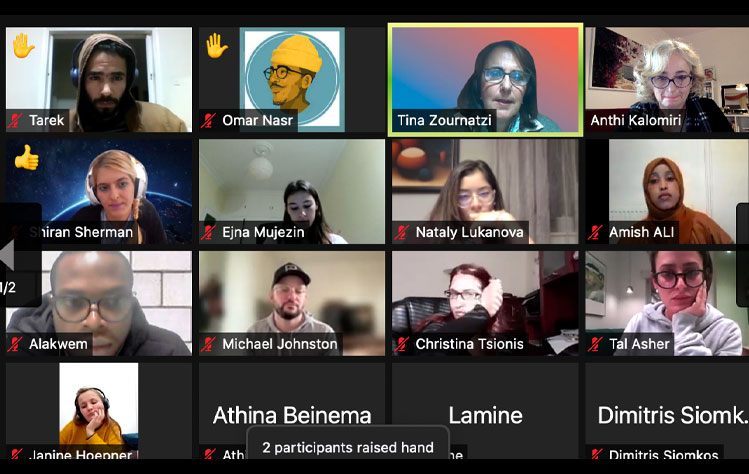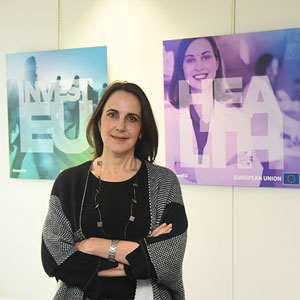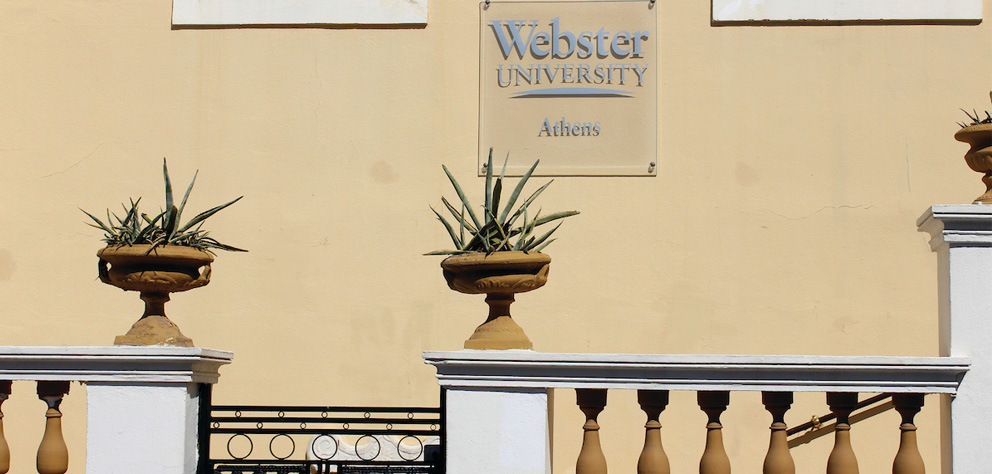Webster Athens: 'How to Spot and Fight Disinformation'
December 09, 2021

"In recent years, it has become clear how dangerous disinformation can be for the wellbeing of society, particularly when it endangers public health as it has during the COVID-19 pandemic," said Tina Zournatzi, head of strategic communication at the European Commission's Directorate-General for Communication in her lecture and online discussion with Webster Athens students in the Global Cornerstone Seminar virtual Fall II 2021 course.
 Zournatzi, who oversees corporate communication campaigns at the pan-European level
while also spearheading the Commission's strategic communications response to the
rising threat of disinformation, spoke to the students about "How to Spot & Fight
Disinformation.”
Zournatzi, who oversees corporate communication campaigns at the pan-European level
while also spearheading the Commission's strategic communications response to the
rising threat of disinformation, spoke to the students about "How to Spot & Fight
Disinformation.”
"Countering disinformation, be it foreign interference or misleading information spread unknowingly, is one of the EU's key priorities under the European Democracy Action Plan," said Zournatzi. "This includes promoting media literacy with tools like the 'Spot and Fight Disinformation' Teacher's Toolkit I had the opportunity to present."
She presented to the students what disinformation is, how it works, how the EU is combating disinformation, and how we should respond and deal with this enormous global issue. "I was delighted to see that the students showed so much interest in this topic and participated actively in the session. It is very important that Webster University exposes them to these topics, as there are still a lot of misconceptions and disinformation [that] will remain a relevant topic in the years to come," said Zournatzi.
“We all have a role to play in stopping disinformation from spreading because it puts our democracies (and potentially our lives) at risk."
As suggested in the EU disinformation campaign, "Taking a tone of 'you're wrong, and I'm right' does not work"; "Don't expect immediate change. It takes courtesy and patience to stop people from spreading disinformation."
Some of the basic guidelines of the Disinformation Toolkit and main points of the discussion were: "Disinformation is used to divide people and exaggerate internal differences. Providers of disinformation want to polarize our societies and promote a ‘us vs. them’ narrative. They find it much easier to target smaller groups when former friends are divided. However, much of the progress in our civilization lies in finding compromises between the interests of different groups. Spreading mistrust in public institutions can lead to political apathy or radicalization. Spreading mistrust in scientific and medical information can have serious health consequences. We all have a role to play in stopping disinformation from spreading because it puts our democracies (and potentially our lives) at risk."
I was delighted to see that the students showed so much interest in this topic and participated actively in the session.
Many students were familiar with the topic from the "Media literacy" and "Media Diversity & Society" courses at Webster Athens during the Spring and Fall I 2021 academic terms. However, the more students went deeper into the subject, the more they discovered how to recognize and avoid misinformation, to spread facts--not fiction--help others to do the same, and check before sharing what they read online and in social media.
The students, coming from nineteen countries and cultures, had the opportunity to examine local and international case studies on disinformation through their perspective of various academic fields such as Business Administration, Computer Science, English, Human Resources, International Relations, Media & Communication, Management/Marketing, Psychology, etc.
The Global Cornerstone Seminar fosters students' educational and personal development to help them define their personal values, strengths, weaknesses, and interests and provide an integrative experience that allows students to address complex problems using the practical and intellectual skills developed in the Global Citizenship Program (GCP).
What is the source of disinformation and what is the main challenge in fighting it today?
“Disinformation has always existed. There have always been rumors, false information from the ancient times," said Zournatzi. “What makes it particularly problematic and harmful is its spread.” According to Zournatzi, disinformation, driven by speculators or political interests, now can spread easily and almost instantly to so many people, amplified by social media which make it such a big problem.
What is the challenge today, the difficulty in spotting and fighting disinformation?
"Right now, it's all about public health,” said Zournatzi. “The pandemic has been such a fertile ground for disinformation and misinformation to spread, and there's been so much questioning of everything that we are trying to do, and constantly being undermined by all these rumors about how vaccines are actually chips that are going to make people crazy."
"Conspiracy theories might sound crazy, but there are people who believe them, and right now, these theories are affecting public health and our capacity to fight the virus and get people to take the protective vaccines," which, as she said, may not guarantee not getting the virus, but at least they protect you from getting seriously ill and dying. "This has been proven, and, no matter what else you may read, the truth about vaccines is that they work."

